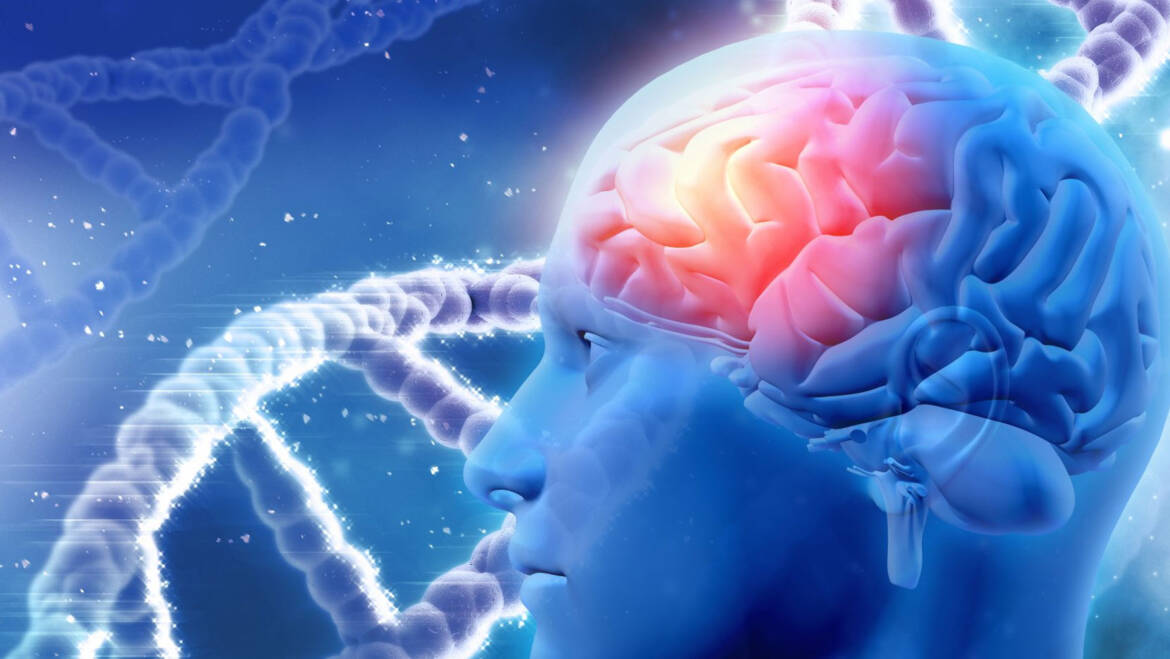Epigenetics and Mental Health
According to the National Institute of Health (NIH), psychiatric disorders are complex multifactorial illnesses involving chronic alterations in neural circuit structure and function as well as likely abnormalities in glial cells. While genetic factors are important in the etiology of most mental disorders, the relatively high rates of discordance among identical twins, particularly for depression and other stress-related syndromes, clearly indicate the importance of additional mechanisms. Environmental factors such as stress are known to play a role in the onset of these illnesses. Exposure to such environmental insults induces stable changes in gene expression, neural circuit function, and ultimately behavior, and this maladaptation appears distinct between developmental versus adult exposures. Increasing evidence indicates that these sustained abnormalities are maintained by epigenetic modifications in specific brain regions. Indeed, transcriptional dysregulation and the aberrant epigenetic regulation that underlies this dysregulation is a unifying theme in psychiatric disorders.
Dr. Emma Meaburn at the UK Trauma Council stated that we’re all human, but we differ in important and meaningful ways. So, we differ in how we act, think, and feel and our risk for diseases. Scientists now know that we differ for genetic reasons, so we’re each walking around with a set of slightly different genetic instructions, and we also differ for environmental reasons. So, we differ in the families were raised with how our parents’ parent us and look after us, the family resources, the schools we go to and the neighborhoods we live in. We now know that it’s our genes and the environment that work together to nudge our development in certain directions and help shape who we become.
What is Epigenetics?
To understand epigenetics, we first need to take a step back and remind ourselves what DNA is. So, DNA stands for deoxyribonucleic acid and it’s basically the set of instructions that we’re born with that we inherit from our parents that contain all the information needed to build a human. The DNA sequence contains a code of four letters A, G, C and T. The human DNA code is about three billion of those letters long and it lives in the nucleus of all our cells. So, it’s the information that’s used in our DNA that helps our body grow, function, and develop. So, epigenetics as a scientific term can be slightly hard to pin down. Scientists from different research disciplines have different slightly different ideas of what it actually means as a scientific term and how you define it but broadly it can be thought of as an additional layer of information that sits above the DNA, and it regulates how the information contained in our DNA is accessed and used. It helps regulate that information so it tells the DNA what molecules it should make, when and at what levels and that process is known as gene expression. So importantly epigenetic marks don’t change the DNA sequence itself. Rather they’re chemical tags or modifications of DNA and they also change how the DNA is packaged in the cell. So, it’s this chemical signposting and packaging that helps regulate how the information in DNA is accessed and used and ultimately helps control cell function.
Why are Epigenetic Patterns important for Human Health?
Epigenetic patterns are critical for human health and normal development. So, for example, epigenetic patterns are required for specialization of cells in the human body. So, our human body we can take our human body contains about 200 different types of cells and they have very different functions. So, for example a brain cell needs to be able to conduct electrical impulses and talk to other brain cells and that allows us to process, understand information, and sense the world that we’re moving around in. In contrast a blood cell needs to move around our body and help protect us from infection, but these two cells have very different structures, very different functions, but they contain the same genetic information. So epigenetic factors are what allows us to get incredible diversity from the same set of genetic instructions. So, what happens is these different cell types have different epigenetic patterns and this is what allows the cells to produce its own unique combination of molecules and proteins that it needs to function and do its job in the body. Because of the close relationship between DNA sequence, epigenetic patterns, and cell function, changes in epigenetic patterns might have long-lasting and important consequences for human health.
How might Epigenetics link Early Experiences to later Mental Health Outcomes?
I think it’s important to state that, currently, this kind of life course epigenetic research is still in its infancy, And, at the moment, we haven’t really identified any patterns to later mental health outcomes. This is partly because this kind of epigenetic research is extremely challenging. We often don’t know what kind of environments are relevant, when we should measure them, and how we should best measure them. It requires us to examine and measure epigenetic patterns in hundreds or ideally thousands of research participants and through their life course, so from very early in life as they progress through their life and accumulate experiences and see how the epigenetic patterns change.
We’re also limited to looking at epigenetic patterns in blood or saliva because those are the tissues we can easily access in living human research participants. But often it’s not entirely clear if that’s the tissue we should really be looking at and if the epigenetic changes we identify in saliva and blood are really reflecting what might be going on in the brain. So, if we’re thinking about mental disorders or mental health and brain disorders, we probably should ideally be looking at brain tissue. So those are some of the kinds of immediate complications when doing epigenetic research.
According to Fushun Wang et al. (co-authors) at Frontiers in Genetics, early-life stress is known to be a leading cause of mental illness, and it is a form of chronic social stress that has long-lasting consequences on mental health. However, how exposure to stress during a critical period of development may produce severe long-term neurological changes is still not clear. Epigenetic processes may be one way by which early-life stress becomes biologically embedded, altering how children respond physiologically and behaviorally to stress. The application of epigenetic principles to developmental science is an area of research that has received a great deal of attention in recent years.
What should Someone keep in Mind when reading about Epigenetics?
Epigenetic research is still in its infancy and it’s incredibly hard to do and do well. There are a lot of complicating factors when looking at epigenetic marks that make it quite hard to decide if the marks you’re seeing are a cause of a problem or a consequence or even if they’re relevant at all. It might be that they’re there just by chance and that’s how we find them. So, I think it’s just important to bear in mind that it might be a mechanism that links an environment to an outcome but it’s not going to be the whole story. There are lots of other things that are involved in how we how we develop, including the genes are inheriting from our parents, and our school environment, and the homes we grow up in that are going to eventually help us in our in our future life and how we move and navigate through the world.
Intergenerational and Transgenerational Epigenetic Effects
So, if you read in the literature about epigenetic changes being passed from generation to generation, it’s worth being clear in your own mind what that actually means. So broadly there can be thought of two possible mechanisms or two distinctions here. So, there’s intergenerational epigenetic effects and that is because when the embryo is developing in the mother’s uterus, epigenetic information for the developing embryo is essentially reset and relayed down. So, for that child epigenome is being reset for the child to go on and develop and have their own epigenetic patterns. That developing embryo’s germ cell lines are also developing at the same time and also having the epigenetic marks laid down. So, when the embryo is developing inside the mother, if the embryo is exposed to an environmental effect so is its germ cells and it’s those germ cells that will go on to make the third generation – the grandchildren. So that’s an example of intergenerational epigenetic effects.
So, where an environmental exposure on the maternal side – the mother carrying the child – can actually impact the grandchildren. Sometimes people get confused talking about that effect and transgenerational effects where you see effects beyond that, so in the fourth and fifth generation where that individual was never actually exposed to the environmental risk. There’s very little or scant evidence so far that I’m convinced of in the human literature that suggests that true transgenerational epigenetic inheritance happens. So, I’ve not seen any clear or convincing evidence from human studies that epigenetic inheritance is possible beyond three generations. So that’s thinking about true transgenerational epigenetic effects where the epigenetic kind of patterns or effects from an environmental exposure during pregnancy are carried on past the third generation into the great-grandchildren and beyond so that those great-grandchildren and beyond are showing these epigenetic effects even though they were never actually exposed prenatally.

